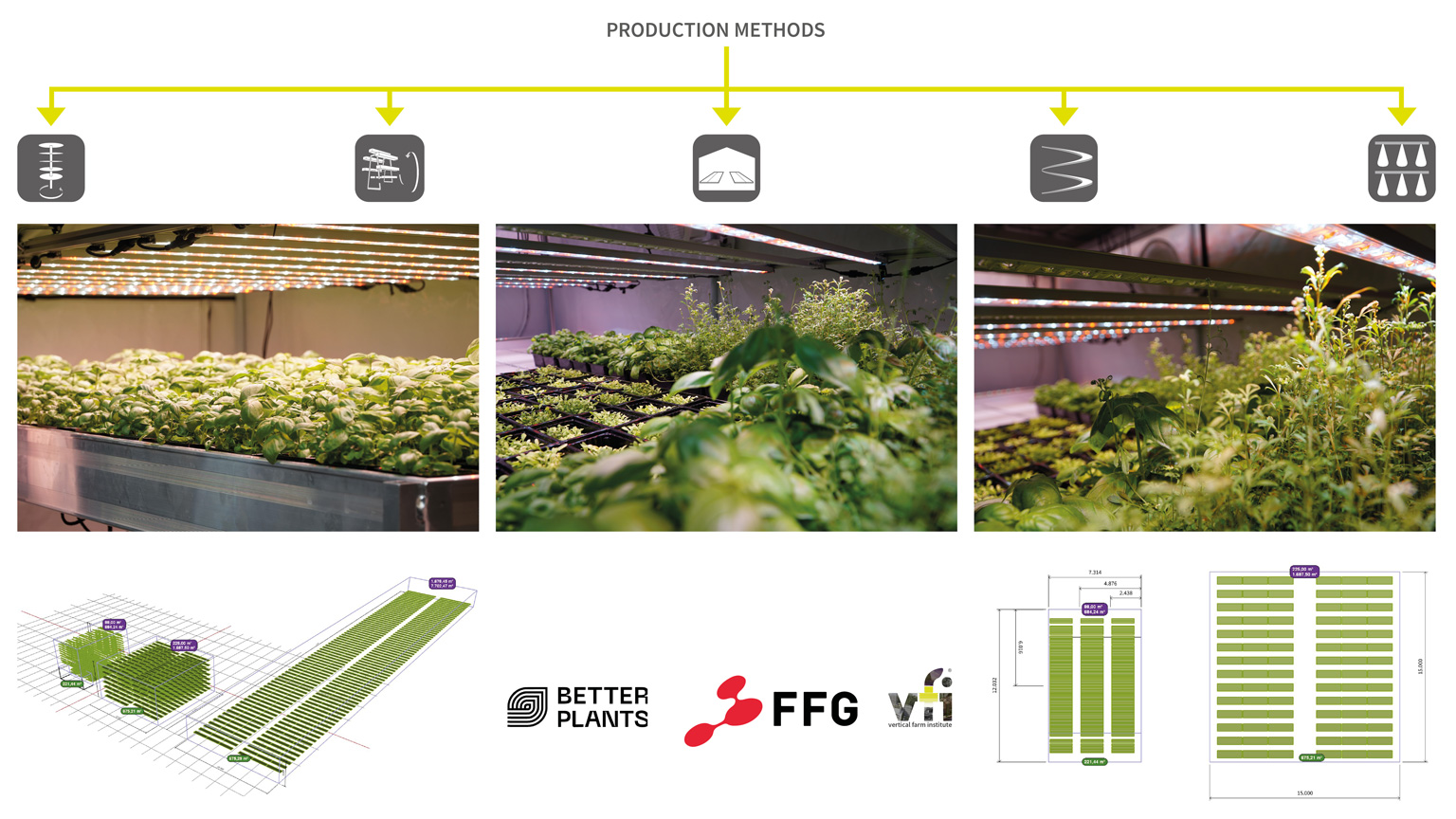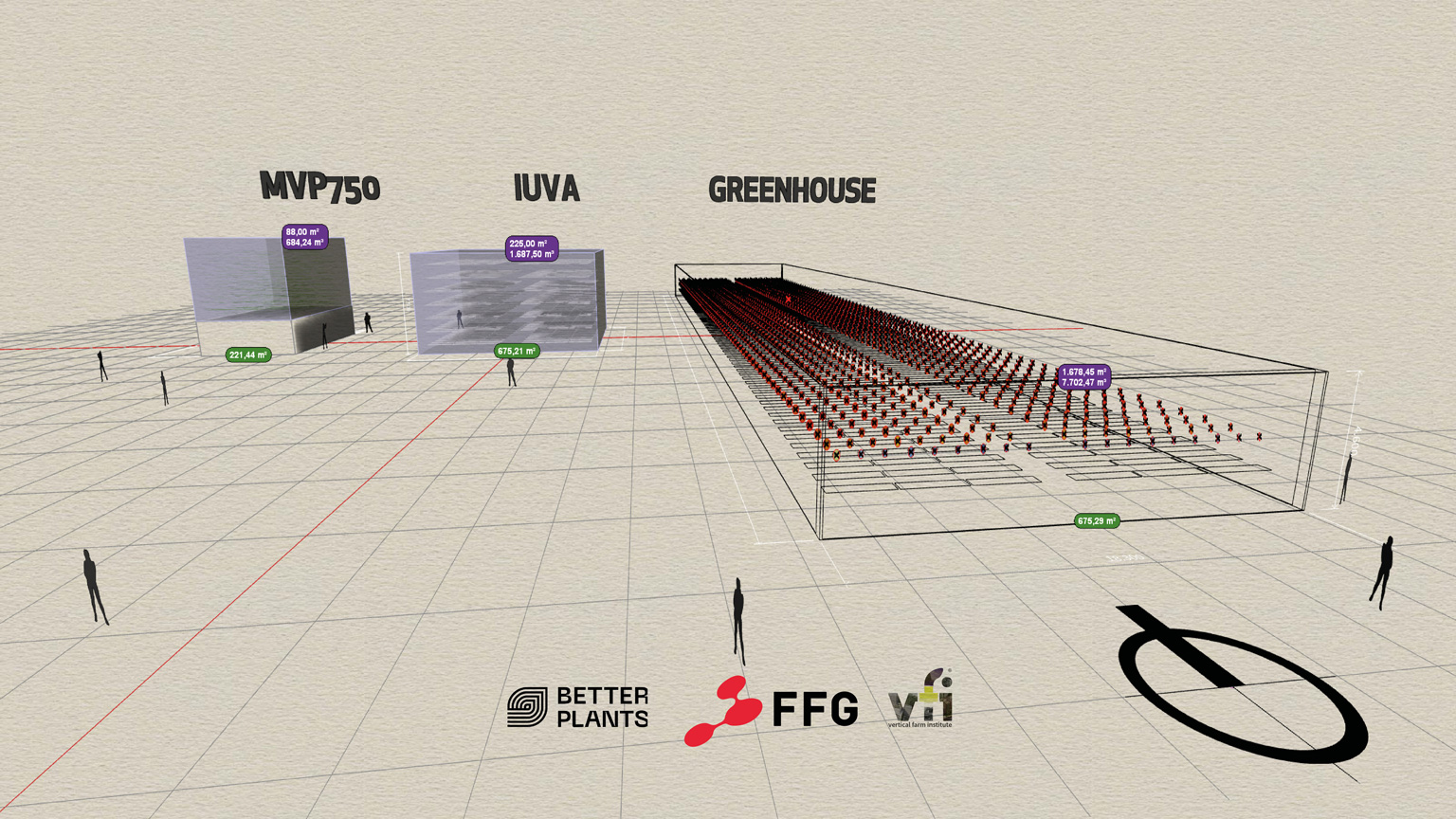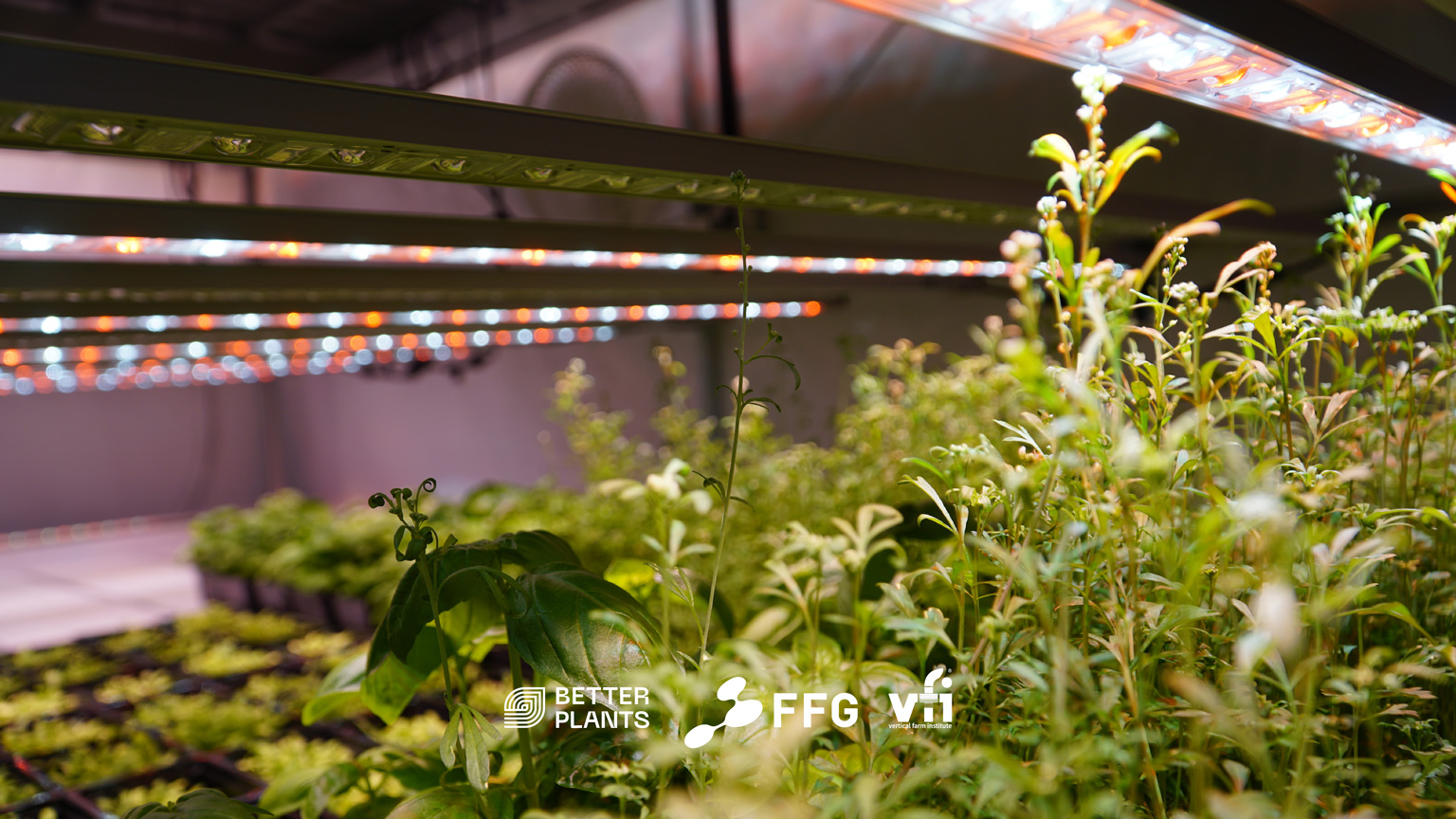Lighting Fixtures - Plant Factory, Greenhouse, Vertical Farm
The vertical farm institute has been commissioned by Better Plants R&D GmbH to determine the energy potential of using Better Plants lighting fixtures as part of the research and development company’s innovation check funding program. FFG - Österreichische Forschungsförderungsgesellschaft

Testing facility and screenshots of the 3D-models (Rhinoceros Mc.Neel / grasshopper)
The global radiation of the reference city of Vienna reaches around 1,120 kWh/m2/a, whereby the ratio between direct and diffuse light is around 56.5% (direct irradiation) and 43.5% (diffuse irradiation). The annual distribution of total global radiation shows that the month with the highest total solar radiation is July with 172.62 kWh/m2 (dir=68.35%, diff=31.65%). The month with the lowest total solar irradiation is December with 18.93 kWh/m2 (dir=72.58%, diff=27.42%).
Calculated over the whole year, this corresponds to an oversupply of PAR by a factor of 2 and therefore requires no further consideration.
The inclusion of the available daylight integral (DLI) or the observation unit of a day deserves closer consideration and corresponds to the greatest potential for reducing the electricity demand for supplementary lighting. If lighting fixtures are controlled in such a way that they are only activated when the DLI for the plant is not reached during the photoperiod - regardless of a potential extension of the photoperiod to 16 hours - a reduction in energy demand of up to 31% can be expected.
From an energy and economic point of view (synergetic dependency), it can also be recommended - for year-round production - that the disinfection phase of the building is scheduled for the month with the most hours of sunshine. In July, the market is saturated with L. esculentum and the solar yield (daylight and heat) is at its highest.

The parametric simulation definition with its integrated geometries.
The orientation of the building (N-S, E-W) has a negligible influence on the energy requirement, especially for the greenhouse - compared to the vertical farm or the Plant Factory. The orientation itself will only become more relevant when the production site is located in an urban area and the enclosed space is integrated into the simulation definition as a geometric context for the daylight simulation.
Determining the crop sequence (sowing - harvest shift) is one of the key decisions for energy-efficient operation of a growth volume - regardless of the building typology. The dependence on growing conditions and the enclosed space can be seen as essential parameters here. Mixed crop systems should be taken into consideration when planning decisions for year-round production (available light vs. growing conditions).
Unsurprisingly, the τ and U value play the most important role in the building envelope. However, more in-depth investigations are recommended in the direction of translucency.
Light is not evenly distributed in greenhouses. This situation can be improved by increasing the diffuse light component. To determine the effect of diffuse light on the growth and development of plants, a trial was carried out with L. esculentum under commercial cultivation from December 2010 to November 2011. Three types of glass were used as greenhouse cover:
Standard glass (no diffuse light, 0%) and two types of diffuse glass that converted part of the direct radiation into diffuse light (from 45% to 71%). A more in-depth study of the dependency between yield and artificial lighting is recommended (see below). Further potential for reducing the energy used in plant production is suspected here.

Testrun lighting density and height distribution of lighting fixtures.